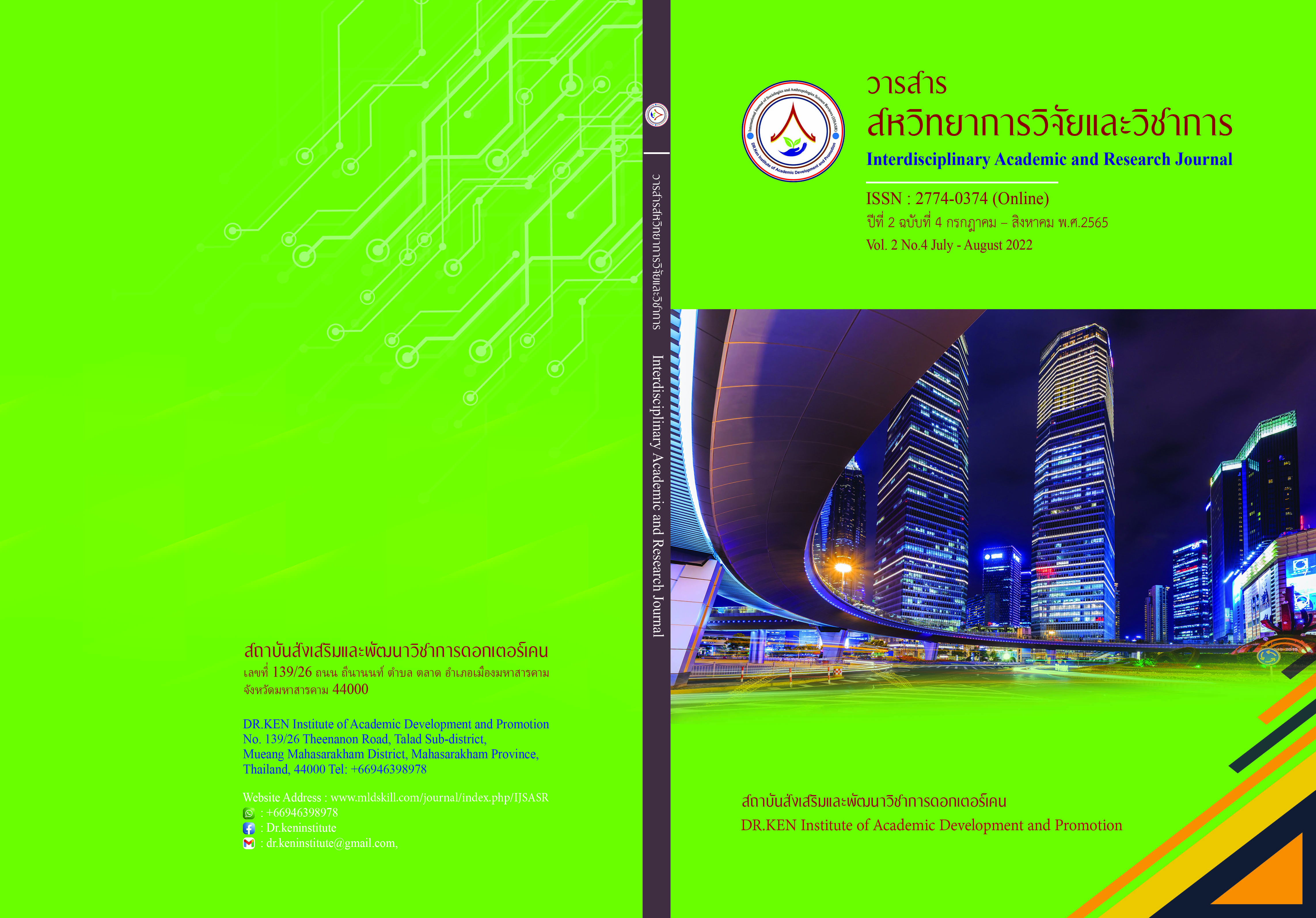Efficiency Development for Community Capital Management of Ban Sang Khirek Sub-District, Mae Rim district, Chiang Mai province
DOI:
https://doi.org/10.14456/iarj.2022.52Keywords:
Efficiency Development; , Management; , Community CapitalAbstract
The direction of the country's development in the period of almost every national economic and social development plan focuses on building immunity in various dimensions for the development of the country to be balanced and sustainable, by bringing the capital of the country with the potential to benefit in an integrated and supportive manner, as well as strengthening it as a foundation for the development of the country. Therefore, this research aims 1) to explore and make the data of Ban Sang community capital mapping. 2) To study the potential of Ban Sang community capital management. and 3) to find ways to improve the potential of Ban Sang community capital management. The research was a mixed-method. The research area was Ban Sang community at Khilek sub-district, Mae Rim district in Chiang Mai. The sample was 98 people from community leaders, residents, and civil servants. Research tools were questionnaires, participant observation, in-depth interviews, and group discussions. Obtained data were analyzed by using descriptive statistics i.e., frequency, percentage, mean, and standard deviation. Then write a descriptive report. The research found that 1) Ban Sang Community has 6 community capital i.e., human capital, social capital, money capital, physical capital, natural capital, and intellectual and cultural capital, which these community capitals have not yet collected and make the data of Ban Sang community capital mapping. It is at risk of being lost and forgotten in the future. 2) Communities have the potential to manage community capital and make community members appreciate and value their community capital. The body of knowledge gained from this research is guidelines for the potential development of community capital can be done in three phases: 1) planning and diagnosis phase i.e. community preparation, situation analysis, and problem determination. 2) Activity phase i.e., lead core development, and activity definition. 3) Summarization and evaluation i.e., situational assessment, reflection and information presentation, self-reliant health networking, and direct and reflective thinking.
References
กมลวรรณ วรรณธนัง. (2557). ทุนทางสังคมที่มีผลต่อการแบ่งปันความรู้ของบุคลากรสายสนับสนุนมหาวิทยาลัยราชภัฏพระนครศรีอยุธยา, วารสารการจัดการสมัยใหม่, 12(2), 79-90
เกรียงศักดิ์ เจริญวงศ์ศักดิ์. (2543). การจัดการเครือข่าย: กลยุทธ์สำคัญสู่ความสำเร็จของการปฏิรูปการศึกษา. กรุงเทพฯ: ซัคเซสมีเดีย.
จามรี พระสุนิล. (2563). การจัดการความรู้ทุนชุมชนเพื่อการส่งเสริมการจัดการที่ยั่งยืนของตำบลแม่เปา อำเภอพญาเม็งราย จังหวัดเชียงราย. วารสารมนุษยศาสตร์และสังคมศาสตร์, 37(1), 60-79.
สุทิตย์ อาภากโร. (2547). เครือข่าย: ธรรมชาติ ความรู้และการจัดการ. กรุงเทพมหานคร: โครงการเสริมสร้างความรู้เพื่อชุมชนเป็นสุข.
มหาวิทยาลัยเทคโนโลยีราชมงคลล้านนา. (2564). วิสัยทัศน์ พันธกิจ เป้าหมาย. [Online] สืบค้นจาก https://www.rmutl.ac.th/page/vision [24 สิงหาคม 2564].
เลหล้า ตรีเอกานุกูล. (2561). ศักยภาพทุนชุมชนเพื่อการเป็นพื้นที่พิเศษด้านการท่องเที่ยว เทศบาลตำบลเวียงเชียงแสน จังหวัดเชียงราย. วารสารวิจัยเพื่อการพัฒนาเชิงพื้นที่, 10(2), 146-158.
สุภาวิณี ทรงพรวาณิชย์. (2546). กระบวนทัศน์วิจัยท้องถิ่นจุดเปลี่ยนการพัฒนา. สำนักงานกองทุนสนับสนุนการวิจัย.
เสรี พงศ์พิศ. (2548). เครือข่าย: ยุทธวิธีเพื่อประชาคมเข้มแข็ง ชุมชนเข้มแข็ง. กรุงเทพฯ: สำนักงานส่งเสริมวิสาหกิจชุมชน.
Polit, D.F. and Beck, C.T. (2012). Nursing Research: Generating and Assessing Evidence for Nursing Practice. 9th Edition, Lippincott, Williams & Wilkins, Philadelphia.
Taro Yamane(1973 ). Statistics: An Introductory Analysis. 3rd Edition. New York. Harper and Row.
Downloads
Published
How to Cite
Issue
Section
License
Copyright (c) 2022 วิภาดา ญาณสาร, ศักดิ์สายันต์ ใยสามเสน

This work is licensed under a Creative Commons Attribution-NonCommercial-NoDerivatives 4.0 International License.
Copyright on any article in the Interdisciplinary Academic and Research Journal is retained by the author(s) under the under the Creative Commons Attribution-NonCommercial-NoDerivatives 4.0 International License. Permission to use text, content, images, etc. of publication. Any user to read, download, copy, distribute, print, search, or link to the full texts of articles, crawl them for indexing, pass them as data to software, or use them for any other lawful purpose. But do not use it for commercial use or with the intent to benefit any business.
















.png)


